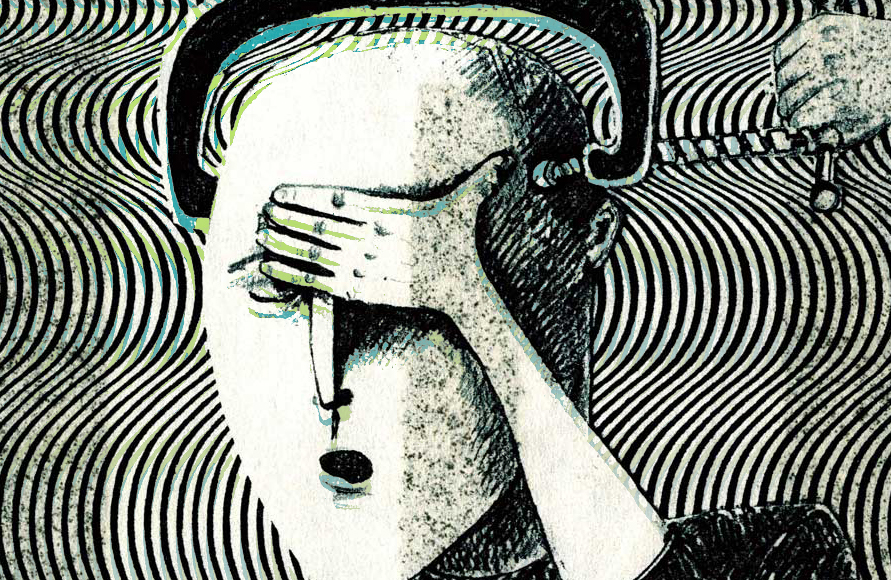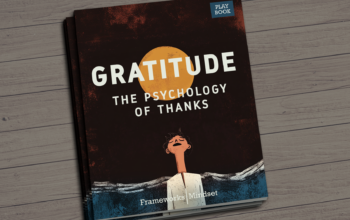Logic in the Time of Corona
The first casualty in the Coronavirus Pandemic was reason. Even before the WHO Issued its first warnings, experts were jumping to conclusions and average people were spouting fallacies like sophists at a feast. The main driver was fear, and, in times of great stress, fear begets panic, and panic begets madness. As it turns out, delusion is more contagious than the virus. What might have been a routine emergency response turned into an unprecedented disaster, the scope of which we have not yet begun to realize.
There are those who will argue that we can never know whether a universal lockdown was an overreaction. Even if Coronavirus causes as many deaths as a severe flu season, people will say that it would have been an order of magnitude worse if we had done nothing. But a simple thought experiment proves that we’ve gone too far: If Coronavirus is as dangerous as they said, then we can’t lift the lockdown until we have achieved herd immunity. But we can’t achieve herd immunity until we lift the lockdown. Some have begun to see this Catch-22, and have called for a calculated reopening, which may prove to be the only viable way out.
Meanwhile, it will be constructive to review our major miscues leading up to this conundrum with the hope that next time we might avoid such catastrophic decision-making. Here, then, is a short history of Coronavirus in logical fallacies.
“If we don’t do anything, 40 million could die.”
The spark that ignited the panic is doubtless a report published by a team of researchers at Imperial College London, which warned that COVID-19 could infect up to 7 billion people worldwide and cause some 40 million deaths. With such alarming figures, government officials everywhere started shutting down businesses and enforcing large-scale ‘social distancing’ measures. But the paper was based on early and incomplete data, and it was not peer reviewed. Now that we’ve gained more knowledge on the disease, the Imperial College team has revised their models. But it was too late; decisions had been made that would alter the course of history.
Fallacy: Jumping to Conclusions
“People are dying!”
Not long after the lockdowns started up, a story began to circulate about a young woman who died waiting for a Coronavirus test. The implication was clear: Coronavirus wasn’t just attacking the elderly or those who were immune-compromised as early reports had indicated. This thing could get anyone and kill in a quick, dramatic fashion. No one was safe, and we should all cower in closets in fear for the coming malady. As it turned out, the woman hadn’t tested positive for Coronavirus after all. The hysteria was caused based on a strong belief by her boyfriend. Nonetheless, fear was spread. This kind of hysteria, multiplied manifold the last month or so has led to panic, which leads to several problems, including hoarding of survival supplies like masks, disinfectant, and, notoriously toilet paper, unnecessarily draining care facilities of needed goods, and putting undue strain on the system. It also prompts people to rush to the hospital when they think they might have the disease (even when they don’t) and not go to the hospital when they need to go (as in the case of a patient with a heart condition or cancer) for fear of catching the thing.
Fallacies: Appeal to Fear, Appeal to Emotion
“If you’re not an epidemiologist or doctor, you don’t have a say.”
Very early on in this debacle, it became clear that the only people we could listen to were experts—epidemiologists, health care professionals, and, of course, Bill Gates. Everyone else would have to keep quiet and do as we were told. Economists, statisticians, politicians, ethicists, business owners, part-time workers, teachers, theologians—all might have valuable input into how we respond to this thing, but, no matter since these folks don’t have the right credentials. Oh, you have a well-thought-out essay on the plight of the 30 million unemployed caused by the lockdown? I won’t listen because it’s not by an epidemiologist! And then there’s YouTube’s banning anything that goes against the WHO. Of course, YouTube is a veteran at logical fallacies.
Fallacies: Appeal to Authority, Genetic Fallacy
“You don’t want to see 10% of Americans dying, do you?”
I once read a post from a doctor which said something to the effect of “Italy has reported a 10% death rate. You don’t want to see 10% of Americans dying, do you?” There are so many things wrong with this, it gave me vertigo. First, the 10% death rate in Italy was based on known cases, which isn’t how epidemiologists measure death rate. The typical approach is to base it on infections, which isn’t known now and can only be estimated later. As we discover more, we find that infections are much higher than previously thought to be, and the vast majority of infections are asymptomatic, which means that the actual death rate is much lower than expected. One study found it to be around 0.1-0.2%, which happens to be around the same rate as the flu. But this doctor wasn’t done. He went on to suggest that the 10% death rate would mean that 10% of an entire population would die because of the disease. No amount of backtracking can correct this atrocious thought process.
Fallacy: Conflation
“The disease spreads through close social contact with infected persons, so we need to eliminate all social contact.”
On a basic level, the concept of social distancing makes a lot of sense. My inner introvert would say that we should have been practicing this as a matter of course. But it doesn’t take an extreme extrovert to see the fallacy in the draconian rules laid down by government officials. Yes, the disease is spread through social contact, but that doesn’t mean that all social contact spreads the disease. If you’re sick or if you’re vulnerable, don’t come into contact with others. It might be that simple.
Fallacy: Part to Whole
“You want to open the economy? You must want people to die.”
To many, this situation is simple: the Coronavirus threat is so great that complete lockdown is the only way we can avoid the loss of millions. To these, anyone who would open the economy must not only be okay with the death of millions, but must positively desire it. Of course, to any open-eyed observer, there are alternative views. It is possible that many will die despite a lockdown. And, as Sweden and Japan have shown, it is possible that opening the economy will not cause many more deaths in the short term, and might prevent deaths in the long term.
Fallacy: False Dichotomy
“The curve is flattening—the lockdown is working!”
All signs indicate that countries who have instituted lockdowns and stay-at-home orders have successfully begun to flatten the curve. But it is a fallacy to conclude that the flattening was due to the lockdowns themselves. As some countries have demonstrated, it was possible to flatten the curve even without shutting down the economy. Others have argued that the disease would have spread in a predictable pattern no matter what we did. It is reasonable to conclude that the lockdowns did lead to more social distancing and that social distancing led to a lower rate of transmission. But can it be said that the lockdown was what did the trick? In an episode of the Simpsons, Homer delights in the false sense of security: “Not a bear in sight—The Bear Patrol must be working!” Then Lisa schools him on logical fallacies. Don’t let’s be Homer.
Fallacies: Post Hoc Ergo Propter Hoc, Affirming the Consequent
“The Coronavirus Pandemic will cause famines of Biblical proportions.”
Everyone is coming to grips with the fact that the economy is going through a catastrophic contraction the likes of which we haven’t seen since the days of The Old Testament. Thirty million unemployed in five weeks, hotels and restaurants closing their doors, companies fearing default, trillions of dollars of stimulus money being churned out to prevent collapse and the perverse economic distortion that has come from it, and supply chains grinding to a halt. But it must be recognized that none of this was due to the virus itself. All of it was due to our reaction to the virus, policy that has forced this calamity on the world. Blaming the virus reassures us that we did all we could to stop an existential threat. But the honest observer will realize that the destruction caused by the virus pales in comparison to the damage done by knee-jerk hypochondriacs and opportunistic totalitarians.
Fallacy: False Cause
It’s hard to identify the post-apocalyptic tale that best foreshadows this life in the time of Corona. But, if there is one that reliably gets our time right, it would be The Twilight Zone. In an episode titled “The Shelter”, we see what happens when a community encounters an existential crisis similar to that of our own. A government official announces over the radio that they have detected nuclear missiles headed for New York and commands everyone take shelter. Panic comes over the families who have not built their own shelters, and soon they degrade into savages to break into the lone shelter on the block.
Though the threat is of a different nature, the situation is the same. Watching the short 30-minute show is a bit like looking into a sociological mirror: Fear leads to panic, which leads to madness. All common sense and mores are abandoned in the bitter struggle to survive.
At the end of the episode, we hear the official announce that they have identified the objects as satellites—there was no nuclear threat after all, and everyone can go back to life as normal. Ashamed, everyone apologizes. And yet, the drill has revealed just how frail that normal life had been and just how quickly everyone had given up the common sense that sustained it.




